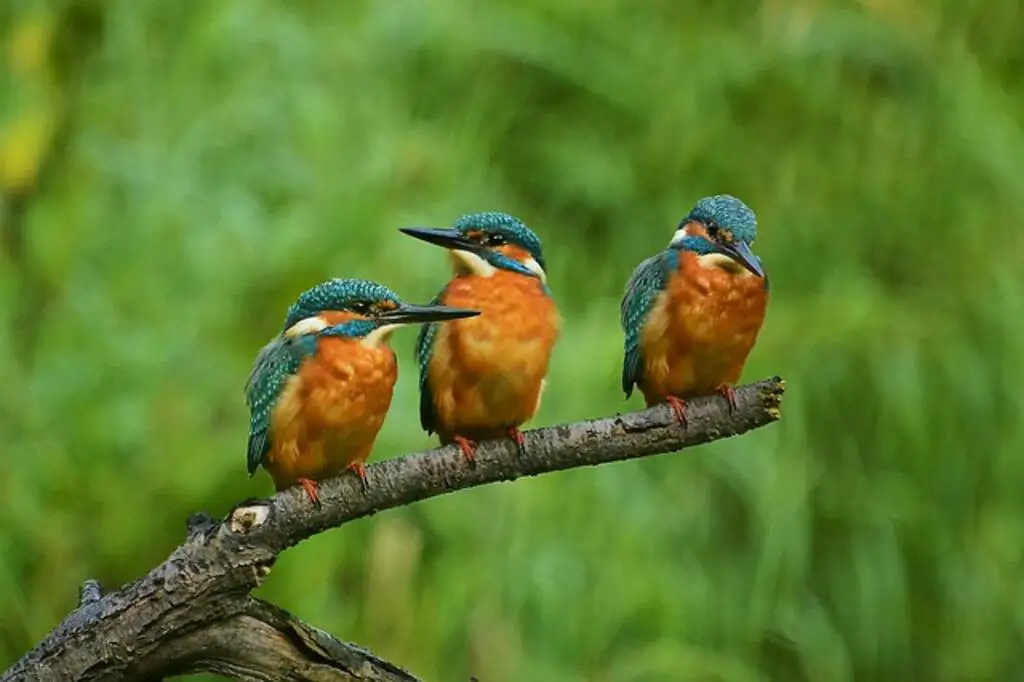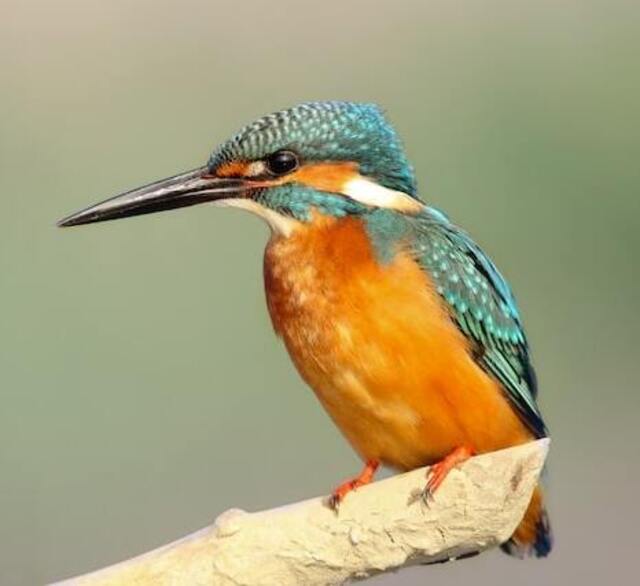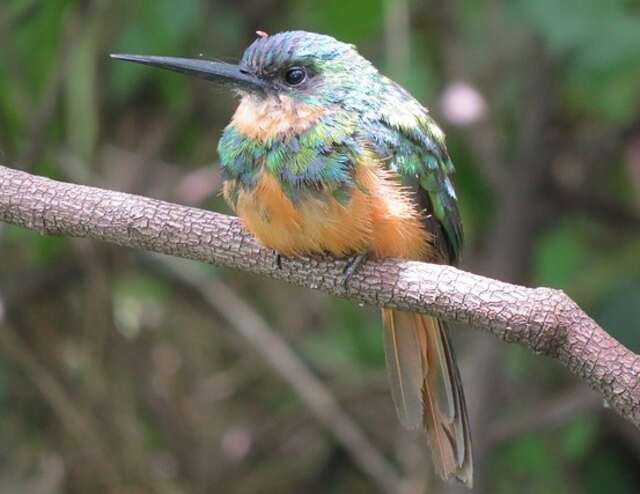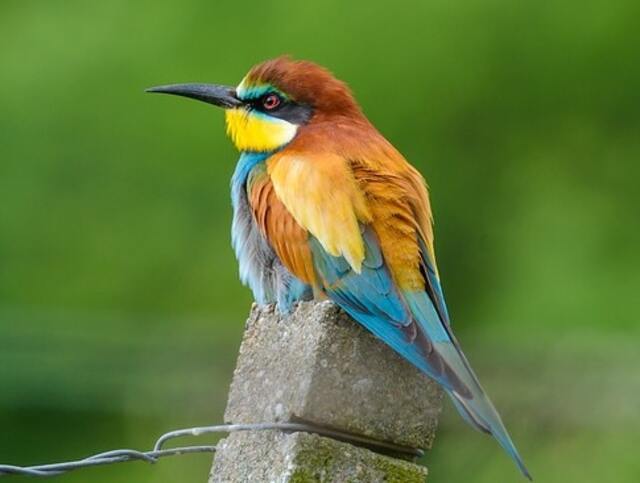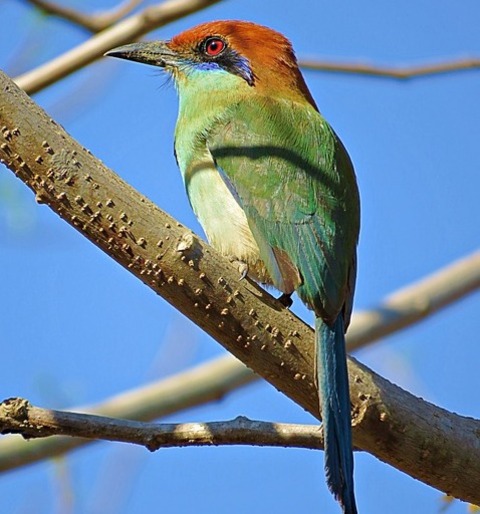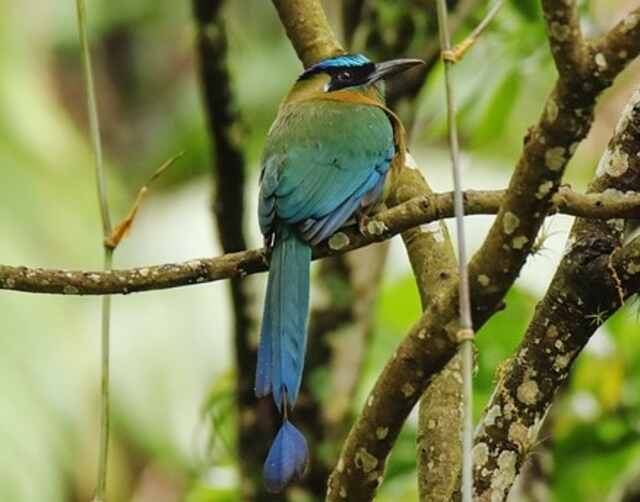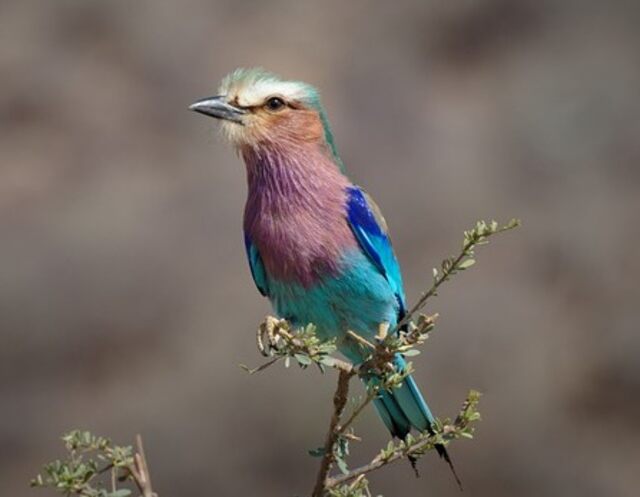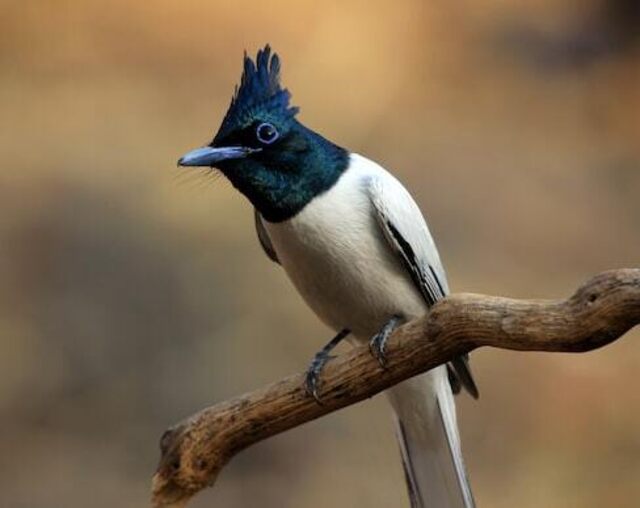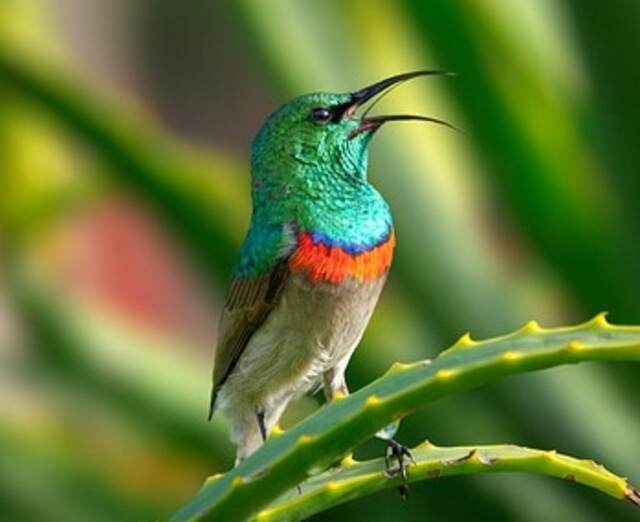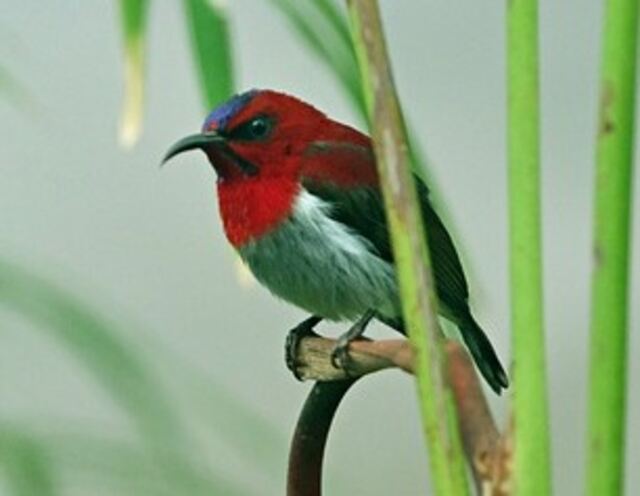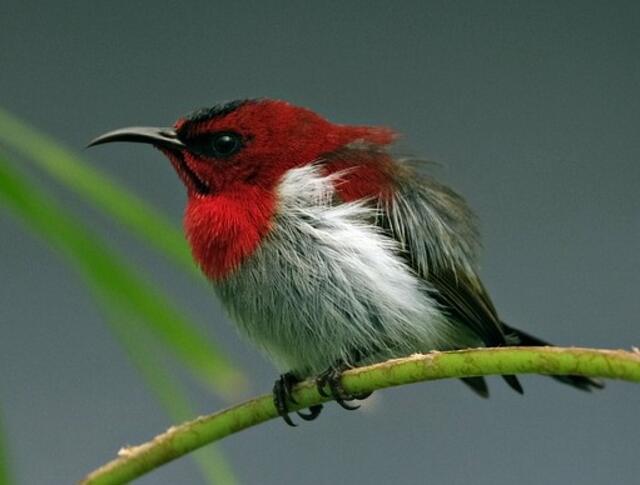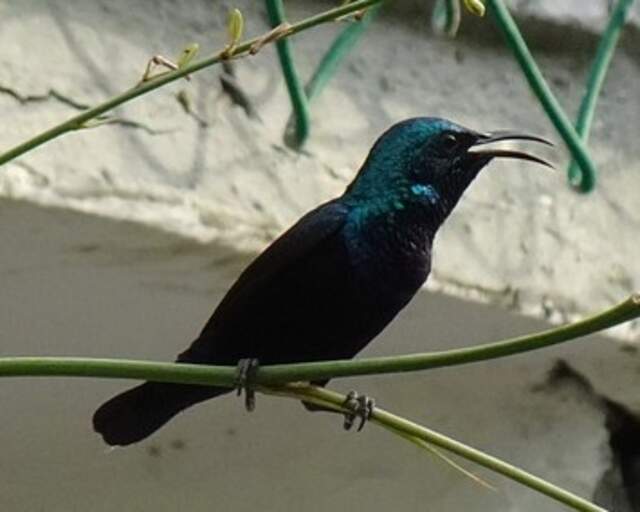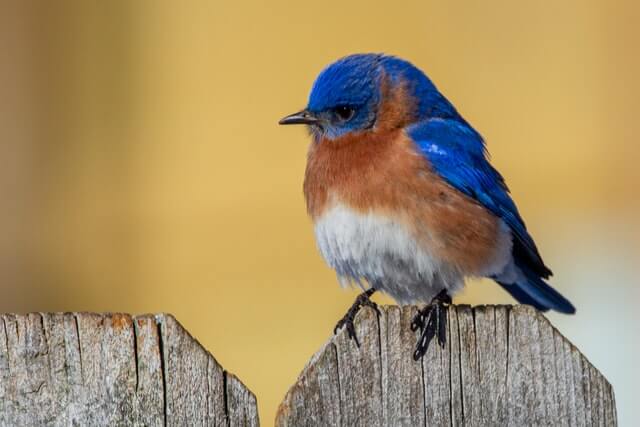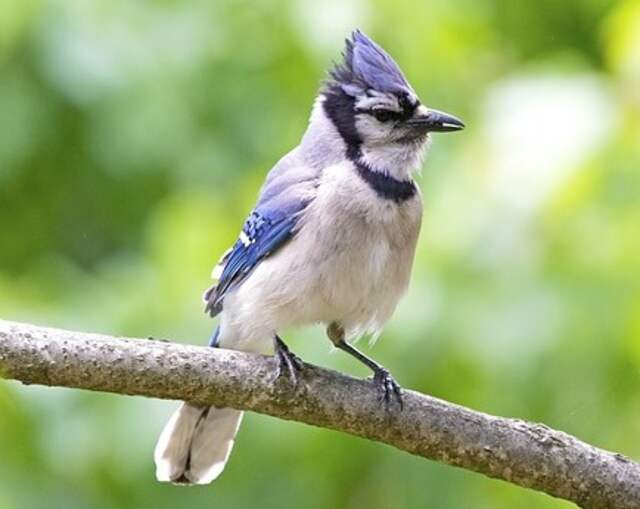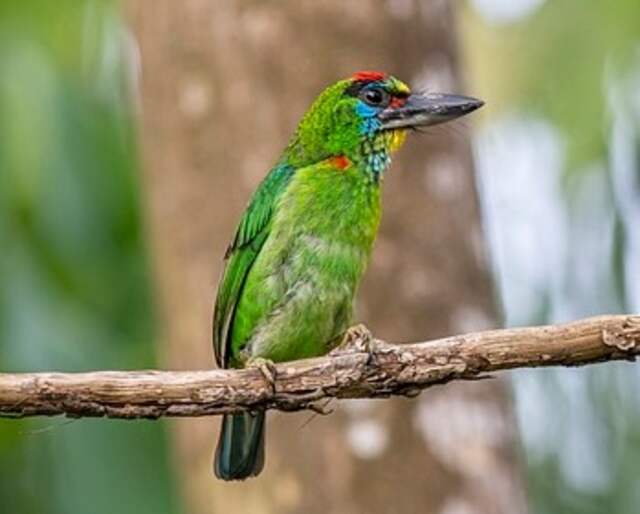Kingfishers are one of the most beautiful birds in the world, with their bright feathers and iconic beaks. While they may not be easy to spot, it turns out that there are some other birds that have similar features to the kingfisher.
In this article, we will discuss 18 birds that look like kingfishers with their impressive characteristics. From colorful wings and striking beaks to vibrant plumage, these birds certainly deserve a closer look!
Table of Contents
- 1 Most Common Kingfisher Species
- 2 Birds That Look Like Kingfishers
- 2.1 Jacamar
- 2.2 European Bee-eater
- 2.3 Cuban Tody
- 2.4 Cinnamon-crowned Motmot
- 2.5 Lesson’s Motmot
- 2.6 Long-tailed Roller
- 2.7 Lilac-Breasted Roller
- 2.8 European Roller
- 2.9 Indian Roller
- 2.10 Paradise Flycatcher
- 2.11 Pitta
- 2.12 Southern Double-Collared Sunbird
- 2.13 Temminck’s Sunbird
- 2.14 Javan Sunbird
- 2.15 Purple Sunbird
- 2.16 Eastern Bluebird
- 2.17 Blue Jay
- 2.18 Red-throated Barbet
- 3 Conclusion
- 4 Author
Most Common Kingfisher Species
| Bird | Size | Coloration | Distribution Range | Habitat | Diet |
|---|---|---|---|---|---|
| Belted Kingfisher | 28–35 cm | Blue-gray with a white collar and rust-colored belly band | North and South America | Near bodies of water such as rivers, streams, and lakes | Fish, crustaceans, and insects |
| Common or Eurasian Kingfisher | 16–17 cm | Bright blue and orange with white underparts | Europe, Asia, and Africa | Rivers, streams, and other bodies of freshwater with vegetation and suitable nesting banks | Fish, crustaceans, and insects |
Birds That Look Like Kingfishers
Jacamar
Jacamars are tropical birds with unique features, such as a long and thin bill that is perfect for catching insects mid-air. They have striking plumage with green, blue, and brown hues, and a distinctive shape with a large head, short neck, and a long tail. Jacamars are found in Central and South America and live in forests, woodlands, and savannas.
Their diet consists mainly of insects, spiders, and small vertebrates. Compared to kingfishers, jacamars have several similarities and differences. Both birds have similar habitats, diets, and behavior patterns, as they feed on small prey near bodies of water. However, jacamars have a more restricted range and are only found in the Americas.
They also have distinct differences in their appearance, as jacamars have a more slender build and vibrant green coloration, while kingfishers are typically stockier and have a range of bright blue and orange hues. Despite their differences, both birds are admired for their impressive hunting abilities and striking beauty.
European Bee-eater
Bee-eaters are an intriguing avian clan renowned for their vibrant plumage and unique conduct. These birds come in various sizes, with the majority of species measuring between 15-30 cm (6-12 in) in length and weighing between 20-60 g (0.7-2.1 oz). Their slim and elongated beaks are finely adapted for catching and consuming insects, which compose the bulk of their diet. Bee-eaters thrive in an array of habitats, from grasslands and savannas to forests and wetlands.
They are dispersed throughout multiple continents, including Europe, Africa, Asia, and Australia. When compared to kingfishers, bee-eaters share resemblances and disparities. Although both bird factions are adept hunters and frequently inhabit regions adjacent to water, bee-eaters more frequently inhabit arid and uncluttered locales such as grasslands and savannas, whereas kingfishers primarily dwell near bodies of water.
Furthermore, bee-eaters possess longer and more svelte beaks than kingfishers, which are tailored for ensnaring fish. Lastly, bee-eaters display a wider spectrum of colors in their plumage, encompassing diverse shades of green, blue, yellow, and red, whereas kingfishers are more commonly recognized for their distinct blue and orange tints.
Cuban Tody
The Tody is a small bird species belonging to the family Todidae. It is native to the Caribbean Islands, particularly in Cuba and Hispaniola. The bird’s distinctive characteristics include a rounded head, short tail, and bright green and red plumage. Todies prefer to live in dense forests and are known for their insectivorous diet, feeding mainly on caterpillars and beetles.
In terms of similarities and differences to the kingfisher, there are several notable features. Unlike the Common Kingfisher, the Tody is only found in the Caribbean and does not have any blue coloring. Additionally, while the kingfisher prefers aquatic habitats, the Tody lives in dense forests.
The two species also differ in their diet, with the Tody mainly feeding on insects. However, like the kingfisher, the Tody is a small bird, measuring around 11 cm (4.3 in) in length. Finally, both birds have unique hunting behaviors, with the kingfisher diving into the water to catch fish and the Tody hovering in the air to catch insects.
Cinnamon-crowned Motmot
The Cinnamon-crowned Motmot is a distinctive bird with a unique appearance. It is part of the Momotidae family and is found in Central and South America. Its habitat includes tropical forests, shrubby areas, and edges of clearings. Its diet consists of insects, small vertebrates, and fruits.
When compared to the kingfisher, the Cinnamon-crowned Motmot has several similarities and differences. Both birds have a similar diet, feeding on small fish and insects. However, the Cinnamon-crowned Motmot is found exclusively in Central and South America, while kingfishers are found across a wider range.
The Cinnamon-crowned Motmot also has a unique appearance, with a distinctive cinnamon-colored crown and a long, racket-shaped tail. In contrast, kingfishers have a more uniform blue or green coloration and a shorter tail. Additionally, while both birds hunt from perches, kingfishers dive into water to catch fish, while Cinnamon-crowned Motmots capture prey on land.
Lesson’s Motmot
The Lesson’s Motmot is a visually striking bird known for its bright colors and unique appearance.. It is known for its bright colors, including blue, green, and rust. This bird can be found in Central America, ranging from Mexico to Panama.
Their preferred habitat includes tropical forests and woodlands, and their diet mainly consists of insects and small animals. When compared to the Kingfisher, Lesson’s Motmot share some similarities in diet, as they both feed on small animals. However, there are many other ways in which they differ.
Lesson’s Motmot is primarily found in Central America, while kingfishers are found across Europe, Asia, and Africa near aquatic habitats. The Lesson’s Motmot is larger, with a distinctive tail and vibrant blue-green coloring. In contrast, kingfishers have a striking blue and orange plumage and are known for their diving and fishing behaviors.
Long-tailed Roller
The Long-tailed Roller is a visually impressive bird that belongs to the Coraciidae family. It is primarily known for its long and beautiful tail feathers. These birds can be found in a wide range of habitats, including savannas, grasslands, and woodland areas in sub-Saharan Africa, the Middle East, and southern Asia. They mainly feed on insects, lizards, and small rodents.
When compared to kingfishers, the Long-tailed Roller and kingfisher share a similar diet of small animals but differ in their range, habitat, and appearance. Kingfishers are more commonly found in Europe, Asia, and Africa near aquatic habitats, while Long-tailed Rollers primarily reside in savannas and grasslands.
Unlike kingfishers, Long-tailed Rollers have a more subtle coloring with a blue-green back and rust-colored underparts. They are also larger and have longer tails than most kingfisher species. Long-tailed Rollers do not exhibit the same diving and fishing behaviors as kingfishers.
Lilac-Breasted Roller
Lilac-breasted Roller: this African bird is known for its striking plumage and unique vocalizations. It measures about 36 cm (14 in) in length and has a lilac-colored breast, turquoise wings, and a greenish-blue back. It is found in savannas and woodlands throughout sub-Saharan Africa, and feeds on insects, small mammals, reptiles, and birds.
Compared to the kingfisher, the Lilac-breasted Roller has some similarities and differences. Both birds have bright, colorful plumage and can be found near water sources.
However, the Lilac-breasted Roller is much larger than most kingfishers and has a different diet that includes a wider range of prey. Additionally, while kingfishers are found in a wide range of areas around the world, the Lilac-breasted Roller is restricted to sub-Saharan Africa.
European Roller
The European Roller is a colorful bird with blue-green feathers on its back, wings, and tail, and a rusty-orange breast. It measures around 31 cm (12 in) in length and weighs about 150 g (5.3 oz). The bird is found in a wide range of areas, including Europe, Asia, and North Africa, and prefers open habitats with trees and shrubs.
Its diet consists of insects, small reptiles, and occasionally small mammals and birds. The European Roller shares some similarities with the Kingfisher, including their habitat preference for water bodies and their diet of small prey. However, they differ in size, with the European Roller being larger than most Kingfisher species.
Additionally, while the Kingfisher is known for its distinctive bright blue and orange plumage, the European Roller has a more muted blue-green coloration with rusty-orange breast. Their behaviors also differ, as the Kingfisher is known for diving headfirst into the water to catch fish, while the European Roller catches its prey by swooping down from a perch.
Indian Roller
The Indian Roller is a colorful bird with a unique appearance characterized by its bright blue feathers, brown wings, and orange breast. It belongs to the family Coraciidae and is found throughout the Indian subcontinent, as well as some parts of the Middle East and Southeast Asia. Its preferred habitat includes open grasslands, scrublands, and agricultural areas.
The Indian Roller feeds on a diet consisting mainly of insects, including grasshoppers, beetles, and crickets. When compared to kingfishers, the Indian Roller shares some similarities, such as their hunting habits and preference for areas near water sources. However, there are also notable differences between the two species.
Kingfishers have longer and sharper bills used for catching fish, while Indian Rollers have shorter and less sharp bills that are better suited for catching insects. Additionally, kingfishers have more vibrant coloration, while Indian Rollers have a more muted color palette. Finally, kingfishers are typically smaller, while Indian Rollers are larger and more robust.
Paradise Flycatcher
The Paradise Flycatcher is a striking bird known for its long tail and beautiful plumage, found across Asia and Africa. It belongs to the family Monarchidae and is often found in forests, woodlands, and gardens. These birds primarily feed on insects, and their unique hunting style involves chasing their prey through the air and catching them in mid-flight.
Compared to the Kingfisher, the Paradise Flycatcher has several differences. It has a slender and elongated body with a longer tail, while the Kingfisher has a stockier build with a short tail. Their coloration also varies, with Paradise Flycatchers having more vibrant hues of blue and orange, while Kingfishers have a more uniform blue color.
The two birds have different habitats and feeding behaviors, with the Kingfisher preferring aquatic habitats and hunting fish, while the Paradise Flycatcher is a forest-dwelling insectivore. Despite their differences, both birds are known for their impressive hunting abilities and stunning appearance.
Pitta
Pitta is a group of brightly colored passerine birds with short tails and stout bills. They are known for their striking plumage, often featuring vivid shades of blue, green, and red. Pittas are found in tropical regions of Asia, Africa, and Australasia, inhabiting dense forests, woodlands, and scrublands. They mainly feed on insects, spiders, and other small invertebrates, which they catch by hopping and searching on the forest floor.
Compared to kingfishers, Pittas have some similarities and differences. While both groups have brightly colored plumage, Pittas have shorter tails and stout bills, which are less adapted for catching fish. Pittas are generally smaller than kingfishers, and their range and habitat preferences are more restricted to forested areas.
While both groups mainly feed on small animals, kingfishers specialize in fish, while Pittas feed mostly on insects. Additionally, kingfishers are more adapted to aquatic life and have a unique behavior of diving headfirst into the water to catch their prey, while Pittas hop and search for insects on the ground.
Southern Double-Collared Sunbird
The Southern Double-Collared Sunbird is a beautiful bird native to southern Africa, known for its striking plumage and distinctive double collar of metallic green and purple. It measures around 14 cm (5.5 in) in length and weighs only 9 g (0.32 oz), making it one of the smallest birds in the region.
The sunbird is found in a range of habitats, including fynbos, forests, and gardens, and feeds mainly on nectar from flowers, as well as insects and spiders. When it comes to their similarities and differences, the Southern Double-Collared Sunbird and the Kingfisher are quite distinct. While the Kingfisher has a blue and orange plumage, the sunbird has a metallic green and purple plumage.
The sunbird is smaller in size, measuring only around half the length of the Kingfisher, and has a different habitat preference, being found mainly in southern Africa. Additionally, the sunbird feeds mainly on nectar from flowers, while the Kingfisher feeds primarily on small fish. Despite their differences, both birds have unique and striking appearances and are admired for their beauty and grace.
Temminck’s Sunbird
Temminck’s Sunbird is a small but colorful bird found in eastern and Southern Africa. The males have a bright green head and upperparts, with a metallic violet-blue throat, while females have olive-green upperparts and a yellow belly. They inhabit a range of habitats, from forests and savannas to gardens and urban areas, and feed primarily on nectar and insects.
When comparing the Temminck’s Sunbird and the Kingfisher, there are a few similarities and differences to note. Both birds have a similar diet of small animals, but Kingfishers are more commonly found near water bodies, while Temminck’s Sunbirds inhabit a broader range of habitats.
The two species also differ in their size, appearance, and coloration, with Temminck’s Sunbirds being smaller and more vibrantly colored than most Kingfisher species. Finally, their habits and behaviors are also distinct, with Kingfishers being known for their diving and fishing behaviors, while Temminck’s Sunbirds primarily feed on nectar and insects.
Javan Sunbird
The Java Sunbird is a small, brightly colored bird found in Indonesia, Malaysia, and Thailand. Its main characteristics include a curved bill, metallic green and blue plumage, and a distinctive long tail. This sunbird inhabits various habitats, from lowland rainforests to urban gardens, and feeds mainly on nectar, insects, and spiders.
When compared to the kingfisher, the Java Sunbird differs significantly in range, habitat, and diet. While the kingfisher is found across much of the world and prefers aquatic habitats with small fish, the Java Sunbird is only found in Southeast Asia and inhabits various land-based environments.
Additionally, the Java Sunbird feeds mainly on nectar and insects, whereas the kingfisher primarily feeds on fish. In terms of size, the Java Sunbird is much smaller than most kingfisher species, and its coloration and behavior differ significantly. However, both birds share the characteristic of having a long, curved bill that they use for catching prey.
Purple Sunbird
The Purple Sunbird, a small and vibrant bird found in Asia, is a burst of color and energy. With a length of about 10 cm (4 in) and a weight of around 6-7 g (0.2 oz), this bird is a tiny but mighty sight to behold. The male of the species is particularly stunning, with an iridescent purple body and black head and wings. The female, on the other hand, has a more subdued olive-green coloring with a yellow belly.
These birds can be found in a variety of habitats, from gardens and forests to scrublands. Their diet mainly consists of nectar, insects, and spiders. Compared to the kingfisher, the Purple Sunbird is smaller, less aquatic, and more brilliantly colored. While kingfishers primarily reside near water bodies and feed on fish, sunbirds inhabit a diverse range of habitats and feed on nectar and insects.
One distinctive feature of the Purple Sunbird is its thin, curved bill, which is specially adapted for feeding on flowers. Like kingfishers, they are also known for their impressive ability to hover in the air while hunting for food. However, their differences in size, coloration, habitat, and diet make them truly unique and fascinating species to observe.
Eastern Bluebird
Eastern Bluebirds are small, beautiful birds with vibrant blue feathers on their backs and rusty red on their breasts. They belong to the thrush family and are native to eastern North America. Their range includes the eastern United States, southern Canada, and parts of Mexico. Eastern Bluebirds prefer open woodlands, meadows, and fields as their habitats, and they feed on insects, berries, and small fruits.
They are cavity nesters and often use old woodpecker holes or nest boxes for nesting. Compared to the Kingfisher, Eastern Bluebirds have some similarities and differences. Both species are small, beautiful birds with bright colors and are excellent hunters. However, while Eastern Bluebirds are found in North America, Kingfishers are found across Europe, Asia, and Africa.
Additionally, Kingfishers prefer aquatic habitats, while Eastern Bluebirds prefer open woodlands and meadows. They have different diets as well, with Eastern Bluebirds feeding mainly on insects and berries, while Kingfishers feed mainly on fish. Despite these differences, both species have impressive hunting skills and add a splash of color to their respective habitats.
Blue Jay
Blue Jays are large, colorful birds that belong to the Corvidae family. They are known for their striking blue plumage on their backs, wings, and tail, and their white faces and black collars. Blue Jays are found in eastern and central North America, from southern Canada to Florida and the Gulf of Mexico. They live in a variety of habitats, including forests, parks, and suburban areas. Their diet consists of nuts, seeds, fruits, insects, and occasionally small vertebrates.
Blue Jays are known for their raucous calls and aggressive behavior when defending their territory. Compared to kingfishers, Blue Jays are quite different in terms of range, habitat, diet, size, and appearance. While kingfishers are found in both the Old and New World and prefer aquatic habitats, Blue Jays are found exclusively in North America and live in a variety of forested and urban areas.
Kingfishers mainly feed on fish and aquatic invertebrates, while Blue Jays have a broader diet that includes nuts, seeds, fruits, and insects. In terms of size, kingfishers are generally smaller than Blue Jays, with more streamlined bodies and longer bills for catching fish. While both birds have striking plumage, kingfishers are typically more brightly colored, with vivid blues, greens, and oranges, while Blue Jays have a more muted blue coloration with black and white accents.
Red-throated Barbet
The Red-throated Barbet is a small, colorful bird native to southern Asia. The male Red-throated Barbet boasts a predominantly green body with striking features, including a red crown, throat, and spot beneath it. Additionally, the male has black spots above each eye and a yellow crown patch, while blue hues accentuate the area around his eyes and lower throat. In contrast, the female lacks most of the male’s facial coloration but bears a similar appearance.
They are commonly found in forests and woodlands, where they feed on a diet of fruits, insects, and seeds. Compared to the Kingfisher, the Red-throated Barbet has a different range, habitat, diet, size, appearance, coloration, habits, and behaviors.
While Kingfishers are commonly found near water bodies, the Red-throated Barbet resides in forests and woodlands. In terms of diet, the Kingfisher primarily feeds on fish, while the Barbet mainly eats fruits, insects, and seeds.
The male Red-throated Barbet is known for its larger size and vibrant coloring, including a distinctive red patch on its throat and blue hues around its eyes and lower throat. This sets it apart from most Kingfisher species in terms of appearance. Additionally, the Barbet does not exhibit the same diving and fishing behaviors as the Kingfisher.
Conclusion
When it comes to birds that resemble Kingfishers, there’s no shortage of fascinating species to explore. From the vibrantly-colored Purple Sunbird to the unique Red-throated Barbet with its red throat patch, each bird offers its own distinctive features and characteristics. And let’s not forget about the Long-tailed Roller, with its impressive tail feathers and striking appearance.
While these birds may share some similarities with Kingfishers, they each bring their own burst of color and complexity to the avian world. So next time you’re out birdwatching, keep an eye out for these stunning and diverse creatures!
Related Post: How To Identify Birds? (Mastering Bird Identification!)

